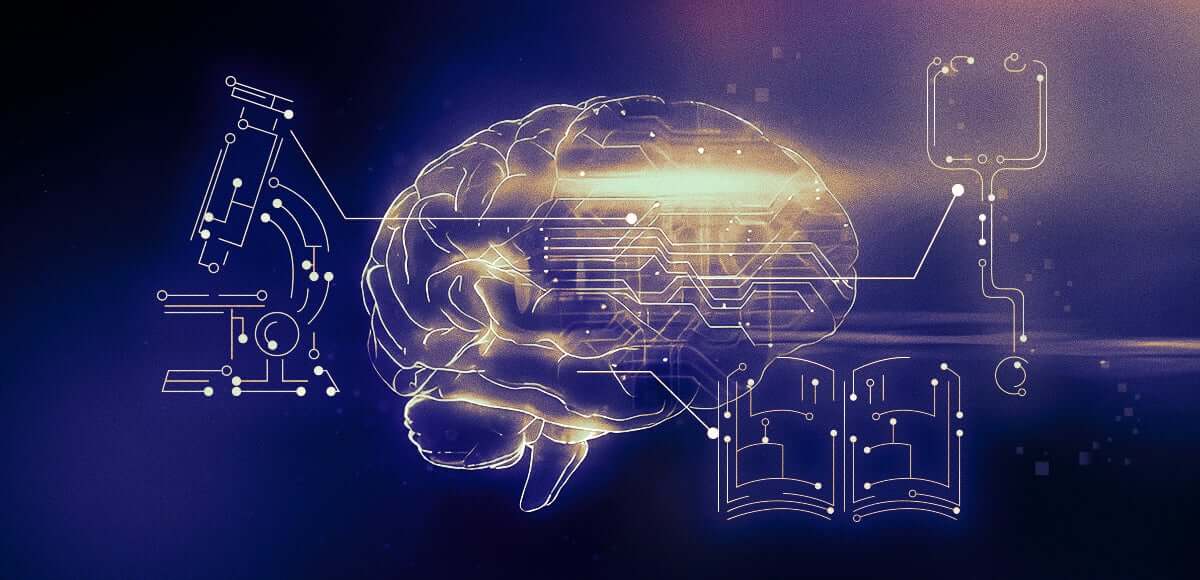News

AI as a Shield: Can Artificial Intelligence Protect Us from Financial Crises?
AI's Viability During Economic Downturns
Although AI has the ability to improve business efficiency and decision-making, it isn't immune to the effects of an economic recession.
The reliability of AI models during a financial or economic crisis depends on the quality of the data that was used to train them, which may lead to inaccurate predictions or insights if the data is outdated, skewed, or lacking.
Furthermore, the adoption of AI necessitates a significant investment, which companies may be hesitant to make during an economic recession. However, AI has the potential to assist in business recovery in a number of ways. For example, it can assist in the optimization of operations and cost-cutting, allowing companies to weather the economic storm.
By identifying new market and commercial opportunities, AI can assist companies in generating new revenue streams, while also providing real-time monitoring and early warning systems to improve risk management and avoid future financial volatility.
In addition, AI has the potential to facilitate future economic growth by fostering innovation and creating new employment opportunities. Through the utilization of robotics and automation systems that incorporate AI, organizations can boost productivity and efficiency, which can stimulate economic development.
How can AI contribute to the prevention of future financial crises?
The responsible and effective utilization of AI in financial services is crucial for its potential in preventing future financial crises. By analyzing extensive real-time data, AI can identify risks and offer early warnings, but challenges such as transparency and interpretability must be addressed to ensure its success.
Through analyzing intricate relationships between economic indicators, financial markets, and global events, AI has the ability to detect significant dangers and provide timely notifications about potential financial crises. This enables financial firms and regulators to pro1ly mitigate risks and preventing catastrophic outcomes.
In addition, AI can create predictive models that forecast market patterns and identify potential risks before they occur. This assists financial institutions in managing risk exposure and adjusting investment strategies. AI can also enhance fraud detection and prevent financial crimes, which can destabilize the financial system.
Predictive models are statistical models or machine learning algorithms that analyze historical data to predict future events or behaviors. For example, a bank could train a machine learning system using past data on customer credit ratings, income levels, and job status to identify clients at a high risk of loan default. The bank can use the predictive model to allocate resources accordingly, providing alternative payment options or collaborating to address underlying financial issues and minimize losses due to defaults.
However, the use of AI in financial services is not without challenges. One major issue is the lack of transparency and interpretability in AI models, making it difficult to understand the reasoning behind AI judgments. To overcome this, transparent explainable AI (XAI) models can be developed to allow human monitoring and involvement.
XAI refers to artificial intelligence techniques that produce explanations for the decisions and actions of AI systems in a way that humans can understand. This is particularly important in fields like banking, healthcare, and criminal justice where AI judgments can have significant consequences. Implementing XAI can improve the effectiveness and reliability of AI systems while ensuring openness, accountability, and fairness.
How can AI contribute to the development of early warning systems for potential risks?
AI has the ability to examine large quantities of up-to-date information, offering valuable insights to those in charge of making decisions. It also helps in developing early warning systems that can detect possible problems in financial markets.
The following steps outline how AI can be utilized in the development of early warning systems:
-
Data collection: AI systems have the capacity to collect data from multiple sources like financial accounts, news articles, and social media feeds.
-
Data preprocessing: Before analysis, the collected data needs to go through preprocessing where irrelevant information is removed and it is transformed into a format suitable for analysis.
-
Feature selection: In the preprocessed data, certain important features are selected as potential indicators of risks. These features can include variables such as cryptocurrency prices, interest rates, credit ratings, and economic indicators.
-
Machine learning: It can be employed to train models that can anticipate potential risks by analyzing the selected features. By utilizing historical data, these models can identify patterns that might suggest the emergence of crises like systemic risks, credit crunches, bankruptcies, debt crises, or stock market catastrophes.
-
Early warning system: After their creation, the machine learning models can be utilized to develop early warning systems that notify stakeholders about possible threats. In addition, these systems can determine the magnitude of the perceived risk and recommend steps to alleviate it.
For example, an AI-based early warning system analyzing historical price data may detect a rapid decline in a specific cryptocurrency. This could signify an impending systemic risk, leading to a credit crunch or a collapse in the cryptocurrency market. By alerting market participants to this trend, preventative actions can be taken to minimize the risk.
In summary, AI's ability to process extensive data in real time and provide predictive insights makes it a valuable tool in the development of early warning systems for identifying potential risks in financial markets.
What advantages and drawbacks are associated with utilizing AI in financial risk management and prevention?
AI offers numerous potential advantages in financial risk management, such as enhanced precision, real-time monitoring, increased productivity, cost-effectiveness, and the ability to perform predictive analytics. Nevertheless, there are also certain limitations to consider, including a lack of transparency, concerns regarding data quality, potential biases, over-reliance on AI, and the risks associated with cybersecurity. It is important to carefully evaluate these benefits and limitations before implementing AI-powered solutions in financial institutions.
Using AI in financial risk management and prevention has many potential benefits, including:
-
Improved accuracy: AI can improve the identification of potential risks in a more precise and timely manner than traditional methods, leading to enhanced efficiency in risk management and prevention.
-
Real-time monitoring: Financial institutions can monitor client behavior and transactional data in real-time, enabling them to promptly detect and address emerging threats such as fraud.
-
Improved productivity: AI-driven risk management solutions can automate various processes, enhancing productivity by allowing analysts to focus on more advanced tasks, as AI handles the repetitive and routine aspects.
-
Cost-effective: AI has the potential to reduce the costs of risk management for financial organizations by automating tasks and minimizing the reliance on manual review.
-
Predictive analytics: Financial organizations can pro1ly manage potential risks by leveraging historical data to forecast and anticipate upcoming risks and trends.
However, there are also some limitations to using AI in financial risk management and prevention, including:
-
Lack of transparency: Financial institutions often face difficulties in explaining the decision-making process of AI-powered systems due to their inherent lack of transparency, making it challenging to comprehend how these systems work.
-
Data quality: In order for AI to operate effectively, high-quality data is critical, as the use of low-quality data can lead to inaccurate predictions and flawed decision-making.
-
Bias: When the data used to train an AI system is biased or if the algorithms themselves have inherent biases, the AI system can potentially exhibit biases as well.
-
Over-reliance on AI: Financial institutions run the risk of becoming overly dependent on AI-powered systems, which can result in complacency and a diminished level of human oversight.
-
Cybersecurity risks: AI-powered systems in the financial sector are susceptible to cybersecurity risks, as they can be targeted by cyberattacks that have the potential to compromise the security of valuable financial data.
The use of AI for financial risk management poses various ethical considerations.
When using AI for financial risk management, there are various ethical considerations that financial institutions need to address. These include ensuring the use of diverse and unbiased data, promoting transparency in decision-making, achieving responsible outcomes, prioritizing data security and privacy, enforcing human supervision and accountability, considering the impact of AI on employment, and using the technology in an ethical manner.
The accuracy of AI algorithms heavily relies on the quality and diversity of the data used to train them. Hence, financial institutions must take measures to ensure that the data they utilize is inclusive, impartial, and representative of all societal groups.
To uphold ethical standards, financial institutions should openly communicate and explain their decision-making processes when employing AI for risk management. Furthermore, they should be willing to accept responsibility for any unexpected consequences resulting from the use of AI.
Given that large volumes of personal data are required for AI applications, concerns regarding data security and privacy arise. Financial institutions must take precautions to ensure that data is used in a secure and ethical manner, implementing necessary security measures to prevent data breaches.
While AI can assist in decision-making, it is essential to maintain human oversight and accountability. Financial institutions should ensure that decisions made using AI are supervised by humans and that individuals are ultimately responsible for the outcomes.
The increasing adoption of AI in managing financial risks carries the potential for job displacement and changes in the workforce. Financial institutions need to be mindful of the impact AI may have on employment and take steps to use the technology ethically while considering the well-being of employees.
Recommended to read

Philippines' Tournament Debut Triumph: Hard-Fought Victory Against World Cup Co-Hosts, New Zealand
Read more

Get K8 Airdrop update!
Join our subscribers list to get latest news and updates about our promos delivered directly to your inbox.


